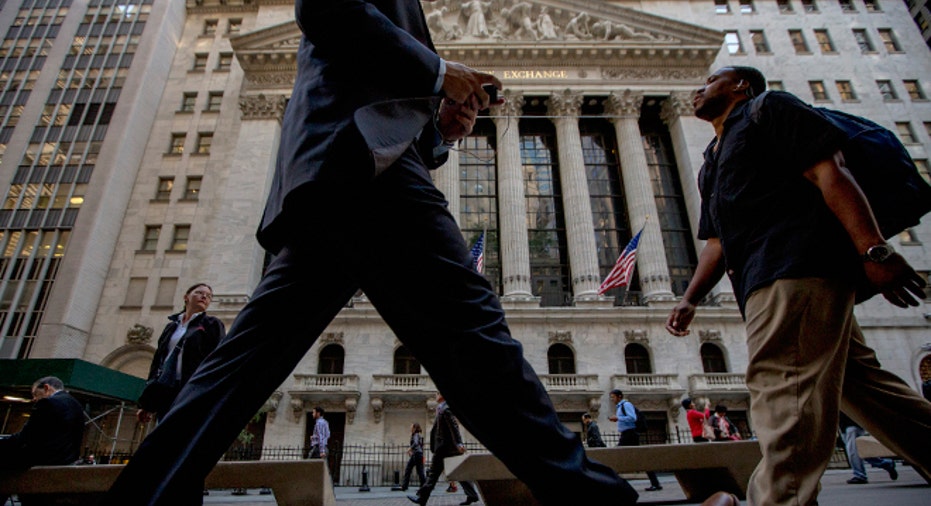Stock Market Gravy Train to Keep on Rollin'

A true Santa Claus rally helped push U.S. stocks to new highs at the end of 2014 with the Dow Jones Industrial average pushing through the 18,000 barrier for the first time with just a few days left in the trading year.
Some mild profit taking pushed the Dow below the 18,000 level on Wednesday, the final day of trading for 2015. But it hardly mattered.
The question now is whether the strong end-of-the-year rally will be short-lived, expiring with all of those holiday season bargains at the mall, or whether the surge upward will maintain momentum into the new year.
The answer, of course, is anybody’s guess. But some influential stock market analysts believe the gravy train is likely to keep on rolling.
“As we move through the last few trading days of the year, many pundits on Wall Street are proclaiming that stocks are ‘overvalued’ and ripe for a selloff. Granted, many of these same naysayers have been beating their drums for at least the last year, and some even before that. So far their warnings have not been heeded by the markets,” Wells Fargo equity strategists Stuart T. Freeman and Scott Wren said in a research note.
For months – going on years, actually – hand-wringing pessimists have predicted that U.S. stock markets are overdue for a significant correction. Stock valuations, according to this crowd, have been artificially inflated primarily by the Federal Reserve’s unprecedented stimulus policies which have been pumping cash into the U.S. economy ever since the dark days of the 2008 financial crisis.
A Collective Tantrum
When the stimulus ends via the phasing out of monthly bond purchases, which happened in October, and higher interest rates (likely in mid-2015), two things will happen, according to the pessimists’ theory, both of which will impact stock valuations. First there will be less loose cash on hand for institutional investors to throw at the stock market. And second, higher interest rates will make everything more expensive and eventually cut into corporate earnings, which will ultimately slash stock valuations.
Another argument -- not quite as steeped in practical economic theory as those earlier rationales -- holds that stocks will tumble after investors, spoiled by years of easy Fed money, throw a collective tantrum once the central bank finally pulls the plug on the stimulus punchbowl by raising interest rates.
There is no minimizing the emotional impact that Fed stimulus has had on U.S. stock markets. For at least the past two years, whenever the Fed was expected to announce a shift in its stimulus policies markets waited anxiously for the announcement then responded accordingly, rallying when investors like the news and selling off when they don’t.
Indeed, this most recent late-December rally was prompted by the Fed’s decidedly dovish statement following its December meeting at which central bankers decided they could “be patient” in their approach toward raising rates. Investors loved the December 17 announcement and stocks have been surging higher ever since.
Of course, patient stock market pessimists will eventually be right, just like the broken clock that’s right twice a day. Stocks will eventually fall. The question is when. The Wells Fargo analysts believe the next decline is probably a long way off, likely at the advent of the next recession.
Stock Market Upside
“Eventually, at some point in the future, the pessimists will be right. There will be a selloff in the equity market,” Freeman and Wren wrote. “Our guess is it will start at some point out on the horizon in advance of the next recession. The economic cycle is not dead, even if this one lasts for longer than most. But we think the next few years still offer upside for the stock market.”
Using price-to-earnings ratio, a widely used measure of stock market valuation, for the broad S&P 500 index, the Wells Fargo analysts make a case that stocks are not overvalued.
Based on the most recent stock market statistics available, the median price-to-earnings ratio for the S&P 500 since 1986 is 16.7 times earnings. Wells Fargo’s 2015 earnings estimate for the S&P 500 is $128. With the S&P 500 Index at 2090 (its level when the report was compiled earlier this month) the price-to-earnings ratio stands at 16.3 times earnings, or slightly below the nearly three-decade median.
“At least using this one simple gauge, and based on our earnings projection for next year, the S&P 500 is not overvalued,” the analysts said. “So do not put too much faith in those market pundits who believe the stock market, as a whole, is overvalued.”